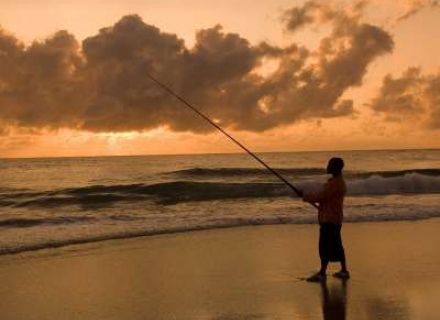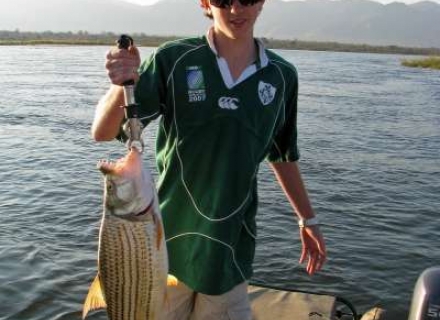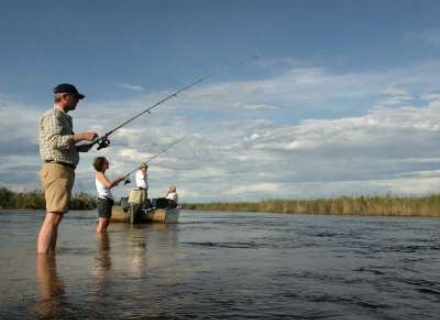Safari Types
Over 80 species of fish occur in the greater Okavango system. As a result of various aquatic habitats however any one stretch of river, channel or lagoon typically hosts between 15 and 30 species. Of these the overwhelming majority by number are comprised of only a handful of species – perhaps four or five common species. Fish distribution and activity is of course seasonal and is driven by the annual flood of the Okavango Delta that occurs over the winter months. During this time fishing is not productive as the fish, and particularly the bream or Tilapia species disperse into the seasonally inundated floodplains to breed. In the summer months (September through to March), once the flood levels recede and the fish concentrate back in the main permanent channels and lagoons, fishing reaches its peak with the best months for fishing being October and November when the waters are warmer.
The fish species most sought after by recreational fishermen are Tigerfish Hydrocyncus vittatus, Nembwe Serranchromis robustus and the various Bream Tilapia species. African Pike Hepsetus odoe is also popular.
Catch and release is practised at all Wilderness Safaris camps with some camps providing limited fishing equipment. Keen fishermen are encouraged to bring their own equipment. De-barbed hooks and nets are encouraged to make catch and release easier and more effective – the net allowing the fish to be landed without exhausting it. The following methods are employed.
- 1.Fishing with artificial lures such as spoons and Rapalas (preferably with de-barbed hooks for easier catch and release).
- 2.Fly-fishing.
Tigerfish are ready takers of flies and will attack anything if in the mood being particularly good in the early morning or late afternoon. Preferably caught on streamer patterns and clousers (favourite colours are red, yellow, black, orange and purple on very strongly constructed flies on a copper wire body ) on rods from 7# – 10# using either floating, or sinking lines (fast sinking lines work best). You will need either piano wire or trace, as their teeth are sharp. The best way to fish is from a boat in the fast moving water on the edges of the river / channel just behind any structure in the water with a fast strip retrieve followed by a hard strike to set the hook if you have a bite. For bream, rods from 3# – 5# are good using floating or intermediate line with fine tippets and trout flies. Beaded nymphs, woolly buggers, San Juan worms and Pheasant tails all work well in varying colours and fishing is done in flat calm water. On artificial lures spinners like the Mepps black fury are good for Bream and Rapalas or cooper and silver spoons are very good for Tigerfish.
A couple of things to consider about Tigerfish flies:
- The fly should sink fast – design your rig (line and leader) around this.
- Hook up – the hook must be needle sharp. Smaller hooks will penetrate the boney mouth better.
- Hook size range from 2-6. Remember that the strike will be ‘soft’ because of the dynamic of the fly rod.
- The better the fly the more it will survive the fight. Important as you want to get the fly back in the water in good condition.
- The best way to ensure the quality of your fly is to tie it yourself.
Recommended camps in Botswana for fishing are: Xigera, Jacana, Jao, Kwetsani, Little Vumbura, Vumbura Plains, Seba and DumaTau.





